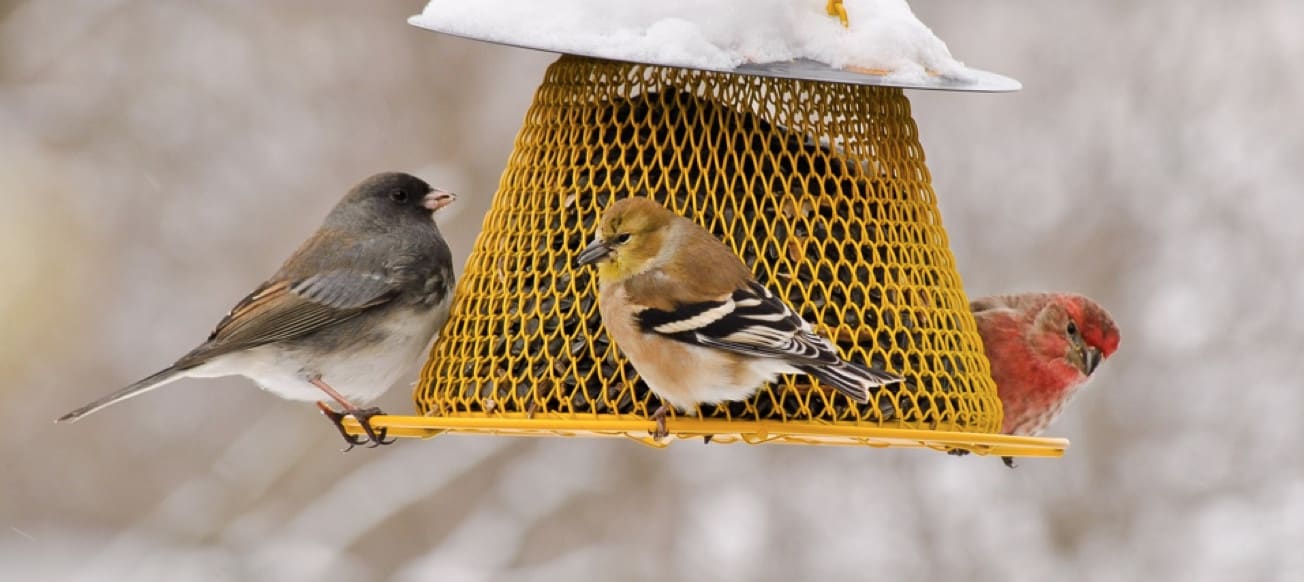Share this article
Human emotion and behavior at bird feeders may impact conservation
Some 57 million households in the United States have birdfeeders. The food can benefit the birds, but what effect do birdfeeders have on the people who hang them, fill them and watch the birds gather? Could it have impacts on conservation efforts?
Researchers set out to understand more about the connection between people’s emotions and behavior at birdfeeders and how that may impact conservation in a study published in People and Nature.
“We know that bird feeding is extremely popular across the world, and despite the fact that it’s so common and a way that people can connect with nature, whether in suburban or rural areas, not a lot is known about people who feed birds, specifically in the U.S.,” said lead author Ashely Dayer, an assistant professor of human dimensions in the Department of Fish and Wildlife Conservation at Virginia Tech. “It seems to us a very obvious place to look at the question: how does people’s manipulation of the environment, through creating a place for wildlife to feed, have impacts on people as well as have impacts on birds?”
In the study, Dayer and her colleagues surveyed participants of Project FeederWatch, a citizen science program from the Cornell Lab of Ornithology. Instead of using the standard data submission forms for the project, the team sent an online survey to a subset of the project participants in all contiguous U.S. states and asked them questions about observations of the natural system at their feeders, how those observations made them feel and any management actions they took. They also asked questions to determine how people decide how much to feed birds and other things they may have noticed at their feeders, like population changes and bird abundance.
“One of the more interesting results was if people observed a predator near their feeder, not all predators were treated the same,” said co-author Dana Hawley, an associate professor of biological sciences at Virginia Tech. “Those who feed birds seem to notice whether the predator near their feeder was a cat, which is non-native, or a hawk, which is native. They also had different emotional responses to the two.” About half the people studied thought hawks were interesting — sometimes even awe-inspiring, Hawley said. Cats, on the other hand, tended to evoke anger, she said.
Researchers also determined that people changed their actions after noticing changes at their feeders. People tended to scare off cats, move their feeders or provide shelter for birds when they spotted cats around their feeder. When people saw sick birds, which evoked emotions like sadness and worry, they often provided more food.
Another thing they found interesting was the factors that impact people’s decisions about how much to feed birds. “Cold weather mattered more than what’s usually predictive of human behavior — time and money,” Dayer said. Feeding birds when it was colder outside was more important to the participants, which Hawley said shows their commitment to bird feeding, despite the cost of bird food. However, she added that it’s important to take into account that the study subjects were citizen scientists who are probably more committed than the average person who feeds birds.
Dayer said the next step is looking at the impacts of feeders on birds themselves including disease risk and how feeders may influence bird behavior.
Putting together feeder impacts on birds and how people make bird feeding decisions can help inform conservation, Dayer said.
“Being able to understand how people decide what to do and what effects these actions have on birds can help answer bird conservation questions and help organizations in the bird conservation arena work with people that feed birds to ensure their activity has the most benefit,” Dayer said.
Header Image: A dark-eyed junco (Junco hyemalis), an American goldfinch (Spinus tristis), and a house finch (Haemorhous mexicanus) feed on sunflower seeds. Bird watchers report that cold weather influences how much they feed birds, more so than time or money. ©Cynthia Raught, Virginia Tech








